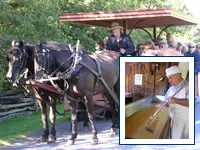Discovery Cruise Series
Kingston to Morrisburg and Return
4 nights, 5 days
Discover the River…May 15-19, 2025
1000 Islands Fall Cruise…Oct 22-26, 2025
2026 dates below
These 4 night, 5 day cruises were created for those that want to deepen their knowledge of the history, geography, and culture of the 1000 Islands and St. Lawrence River. Discovery Cruise itineraries are enhanced with unique attractions, step-on speakers, and an educational focus.
These return cruises will start and end in Kingston, Ontario with overnight stops in the 1000 Islands, Brockville, Morrisburg, and Gananoque. Please check the itineraries below for more details on speakers and attractions.
*Due to the need to confirm unique speakers and attractions, the itineraries for these cruises are subject to change. Call our Reservations Department at 1-800-267-7868 for more information.
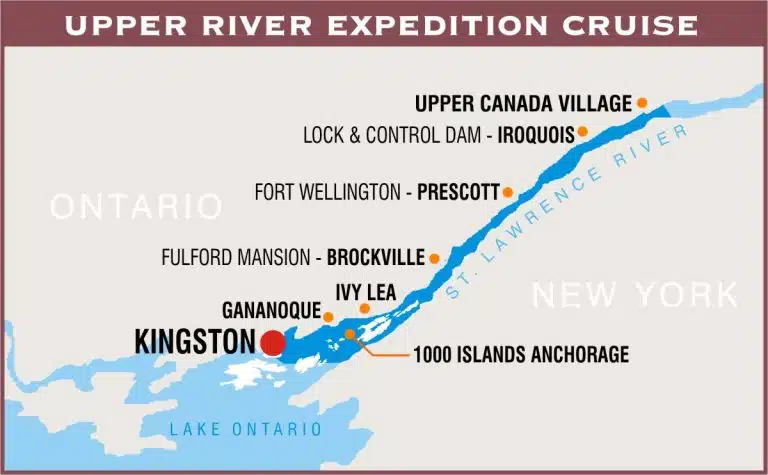
Attractions
In Alphabetical Order

1000 Islands
This cruise will take you to witness the island paradise and natural and man-made charm of the archipelago.
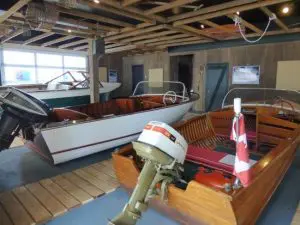
1000 Islands Boat Museum
The 1000 Islands Boat Museum is a hands-on Museum where history becomes something that can be touched, built, and experienced. The Museum includes a Boatbuilding Shop, an Activity Center, and Exhibit Galleries.
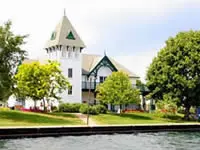
1000 Islands Heritage Museum
On Gananoque’s waterfront there’s a grand Victorian building designed in the tradition of the late 19th century two storey “grand cottage”. This museum is dedicated to interpreting the history, geology, ecology, and culture of the 1000 Islands region.

Canadian Aviation and Space Museum
Located on a former military air base, the Canadian Aviation and Space Museum focuses on aviation in Canada from its beginnings in 1909 to today. Your journey through Canada’s aviation and space history will traverse the early days of flight to the future of space exploration.
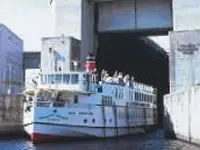
Carillon Lock
The lock at the Carillon Lock and Power Station is an impressive piece of engineering. Built between 1959 and 1964 this complex lock is a power station, powerhouse-dam and navigation lock in one.
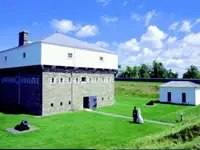
Fort Wellington
The first Fort Wellington was built during the war of 1812 high above the St. Lawrence River at Prescott. The second Fort Wellington, still standing today, was built as a result of the Upper Canada Rebellion of 1837-38. Today, Fort Wellington is a national historic site, and is now administered by Parks Canada.
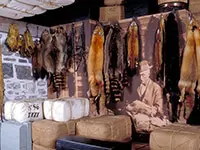
Fur Trade Museum
Located to the west of the Island of Montréal, the Fur Trade Museum at Lachine site is a testimony to the culmination of the fur industry in the Montréal region in the 18th and early 19th centuries.
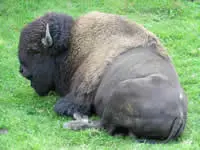
Omega Park
A visit to Omega Park encourages the observation of earth and nature and all its wonders. In the comfort and safety of a utility bus, you will explore 10 kilometers of the beautiful, natural landscape of a Laurentian forest coming face-to-face with many species of Canada’s wild animals
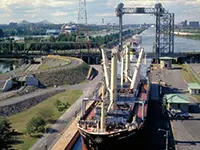
Seaway Locks
All locks on the Seaway are similar in size. In width they are 80 feet; the depth over the sill is 30 feet; and the length - that is breast gate to fender - is 766 feet. Ships can be raised or lowered from 45 feet to 49 feet depending on the season of the year.
